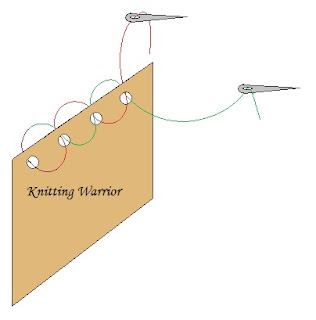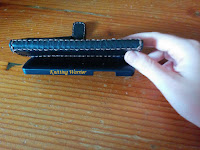 |
| Phone case, leather pieces |
My beloved purple phone case started dying last month and I was forced to resurrect it. Luckily I had some brown kangaroo leather on hand (a benefit of having a craft-crazy family). I used the old phone case as a template to cut out two pieces of leather, making sure to remember to add a hole for the camera.
I had originally planned to use the inside pieces of the old phone case, however it turned out that the inside was just cheap cardboard :( So I decided to cut out the pieces from an old plastic folder instead.
 |
| Cardboard inside phone |
 |
| Left: Testing the placement of the magnets. Right: Double sided tape |
I used a square ruler to check that the plastic pieces were evenly spaced, and then used double sided tape to keep the pieces fixed to the leather prior to stitching the phone case together. The image above shows the section of the phone case which will have a pocket (no double sided tape for the pocket).
I then used a four-pronged picking fork with a mallet to punch the holes in the leather (both sides at once) and stitched it with the saddle stitch technique.
 |
| Saddle Stitch |
Saddle Stitch:
Thread two needles (one at each end of the same thread). Choose your starting point and push the thread through the pre-formed hole until it is halfway through. Using one of the needles, push the thread through the next hole and pull until tight. Then take the other needle and do the same, approaching from the other side. Repeat.
Because the leather is essentially being 'double-stitched' the resulting product is more durable than if it was sewn with a running stitch.
I used a contrasting waxed thread for my phone case, which turned out quite nicely.
 |
| Polyurethane glue |
I trimmed the leather using scissors and glued the plastic frame (from the old phone case) to the leather. I initially used an expanding polyurethane glue, however the 'foam' expanded more than I had anticipated. I trimmed off the excess with a craft knife and repaired it with superglue which did not show at all. :D I also used the knife to cut a 'pocket' into the inside of the phone case (the plastic inside stops the knife from going all the way through the case).
 |
| The middle side of the frame is left without glue. |
 |
| The finished product |



















